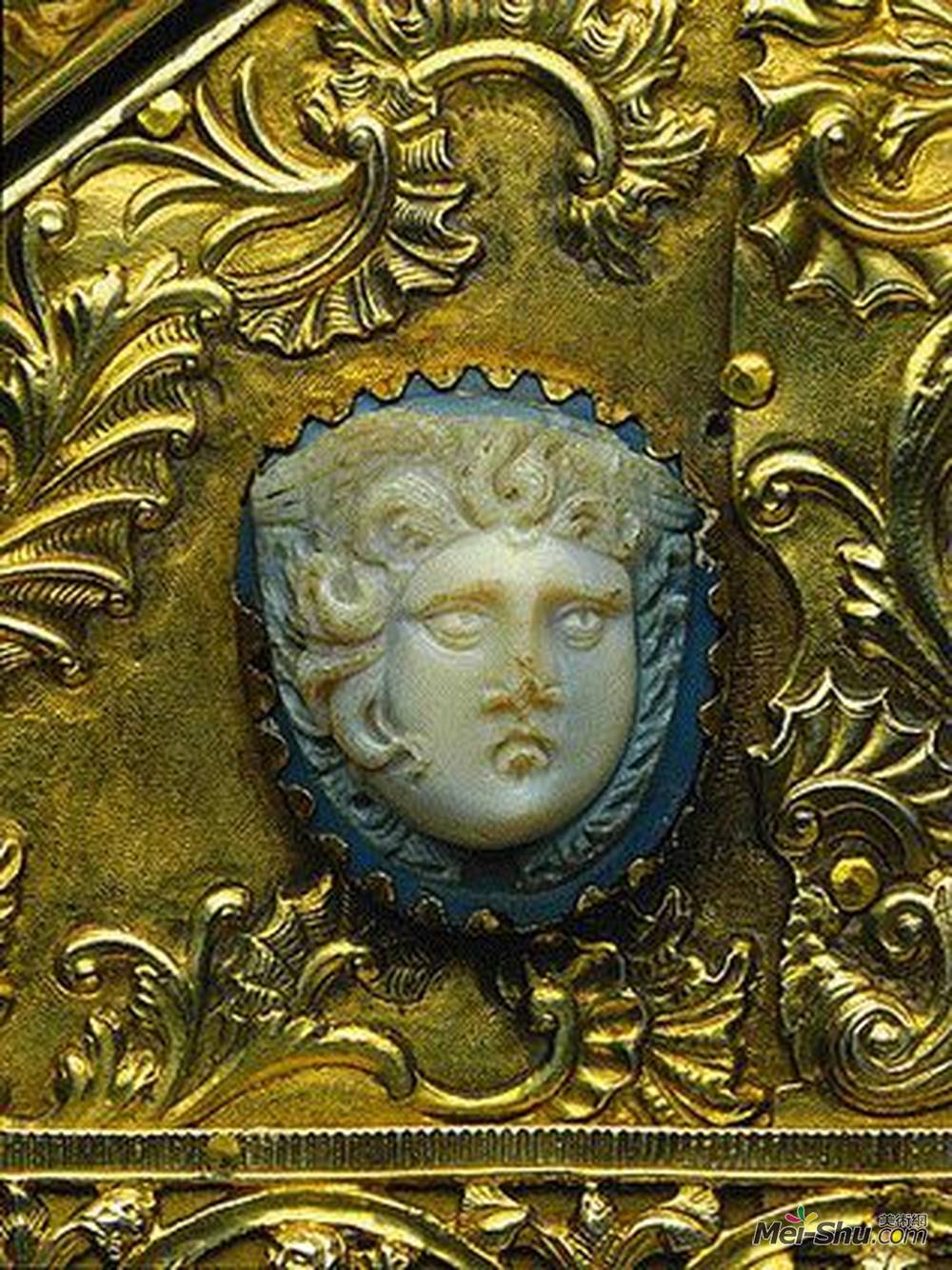 凡尔登的尼古拉斯(Nicholas of Verdun)高清作品《Cameo with Medusa Head, 1st Cent. after Christ》
凡尔登的尼古拉斯(Nicholas of Verdun)高清作品《Cameo with Medusa Head, 1st Cent. after Christ》
作品名:Cameo with Medusa Head, 1st Cent. after Christ
艺术家:凡尔登的尼古拉斯
年代:c.1200
风格:莫桑艺术
类型:神话画
大约在1200年前后,在神龛前面可移动的梯形面板的左手边放了一幅美杜莎的古代浮雕。在Greek神话中,任何看美杜莎头的人都会变成石头。这些传说在中世纪是众所周知的。美杜莎的浮雕被贴在神殿的前端,因为同样的原因,在中世纪教堂的西端经常描绘恶魔的形象,以象征邪恶已经被基督教教堂征服,因此不能进入教堂建筑。
Title:Cameo with Medusa Head, 1st Cent. after Christ
artist:Nicholas of Verdun
Date:c.1200
Style:Mosan art
Genre:mythological painting
An ancient cameo of Medusa was set in the left-hand side of the removable trapezoidal panel on the front of the shrine sometime around 1200. In Greek mythology, anyone who looked at the head of Medusa would turn to stone. Such legends were well known in the Middle Ages. The cameo of Medusa was attached to the front end of the shrine for the same reason that images of demons were often depicted on the west end of medieval churches to symbolise that evil had been vanquished by the Christian Church and could not, therefore, access the church building.
作品名称:凡尔登的尼古拉斯(Nicholas of Verdun)高清作品:Cameo with Medusa Head, 1st Cent. after Christ
作品链接:https://www.mei-shu.com/famous/27432/artistic-175640.html
作品类别:油画
免责声明:本站部分公开资料来源于互联网,目的是用于学术交流与讨论,并不代表本网赞同其观点和对其真实性负责。如果您认为我们的侵犯了您的权益,请与我们联系(banquan#mei-shu.com #替换为@),我们将在第一时间删除相关内容。